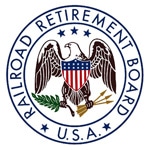
The economic uncertainty and long-term health risks posed by the COVID-19 pandemic present a challenge nationally, and the Railroad Retirement Board (RRB), which administers railroad sickness and unemployment benefits, is advising all railroaders to establish an online login.gov account.
Establishing this account gives workers a head start in the event that RRB unemployment or sick benefits are needed by RR workers in the case of carrier furloughs or illness.
Information needed to create the login.gov account includes:
- A current, state-issued ID;
- An email address;
- Enabling two-step authentication;
- Providing basic information such as name, address and phone number;
- Social Security number;
- Address verification.
Once the info is processed, a personal key will be provided to the worker that will be needed to gain access and make changes to the account. This key should be written down and stored in a safe place.
RRB operations, like those of many other public service agencies, have been affected by the coronavirus pandemic. The board is following CDC guidelines and has closed its field offices, so services are being provided primarily through the RRB website and its toll-free number (877-772-5772).
A login.gov account permits users to have instant access to:
- Apply for unemployment benefits
- Claim unemployment benefits
- View Railroad Unemployment Insurance Act account info
- Claim sickness benefits
- View service & compensation
<liGet retirement benefits estimate
Related News
- Resolve to Keep Your Timebook Current in 2026
- Victory in Chicago as SMART-TD Helps Establish New $1.5 Billion Transit Agency
- New Jersey Train Length, Crew Size Law Awaits Governor’s Signature
- CSX Conductor, Single Mother Devastated in Head-on Collision
- SOFA Safety Alert
- AJFL Scholarship Application Opens Soon
- SMART-TD Applauds FRA and DOT for Strengthening Cross-Border Rail Safety Protections
- Regional Training Seminars coming to St. Paul, Baltimore in 2026
- Transit Funding Boost Proposed by SMART-TD Backed Bill
- California SMART-TD Brother Killed on the Job